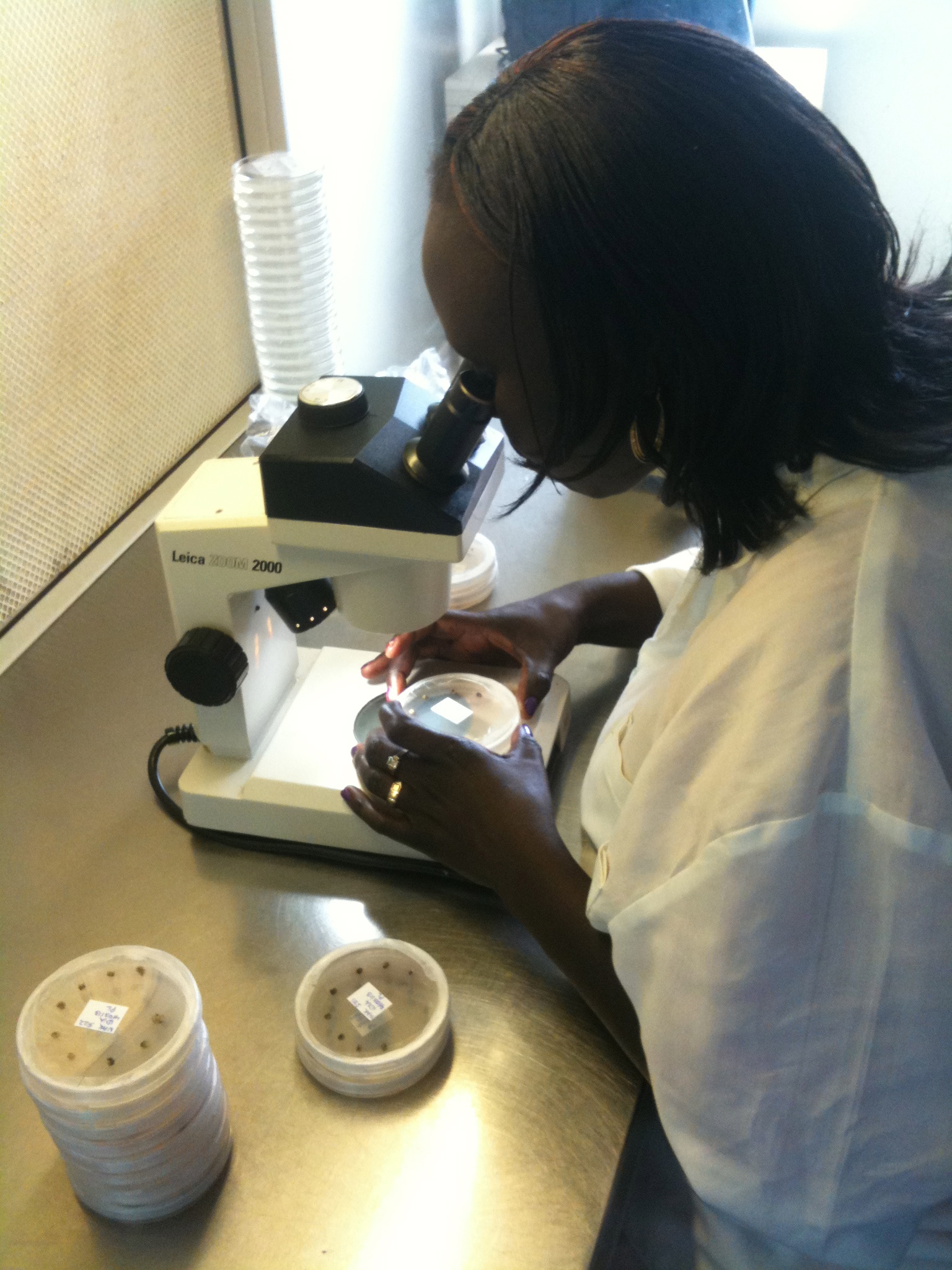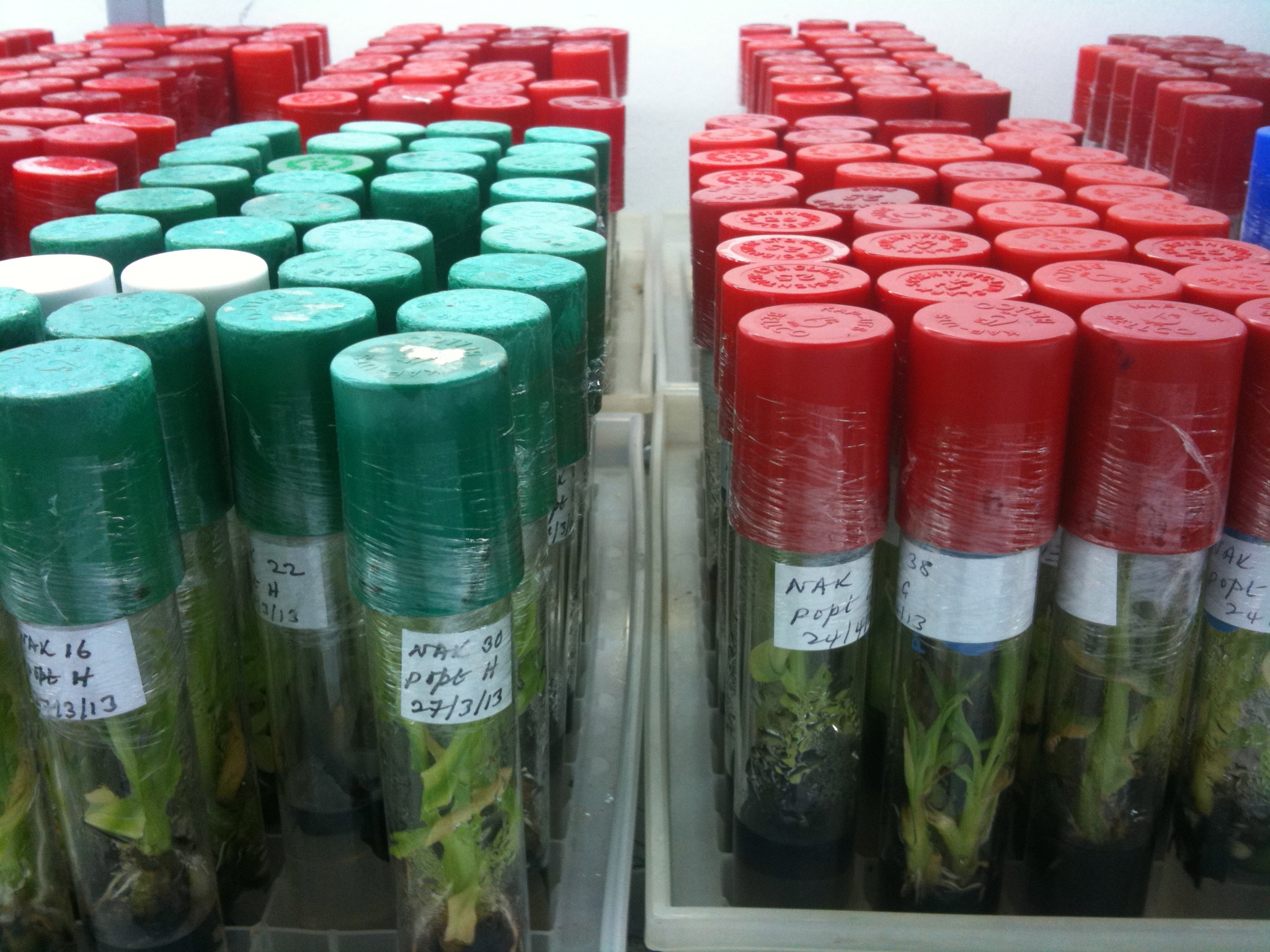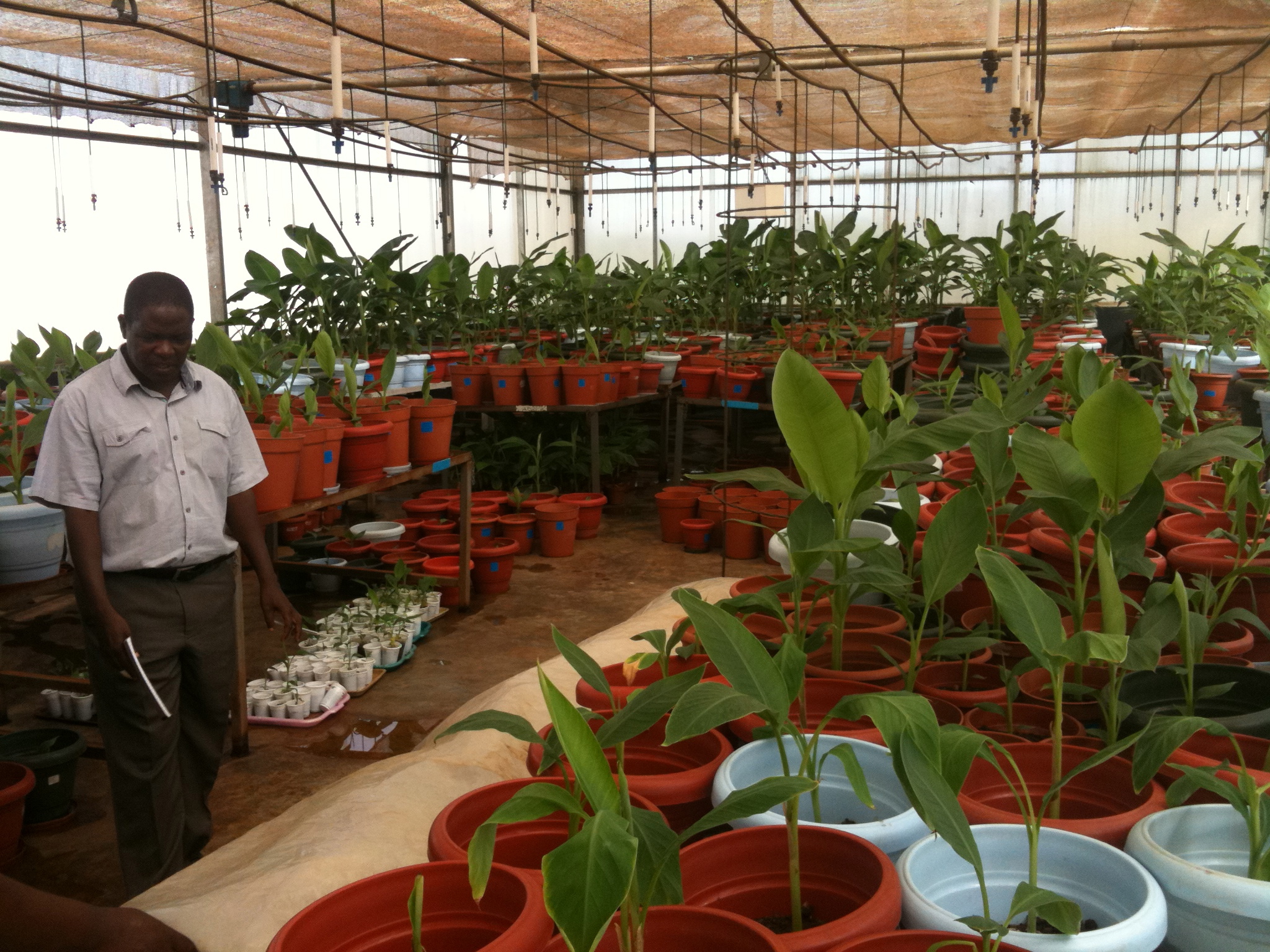The long dirt road leading up to the Kawanda Agricultural Research Institute in Uganda is lined by neat single rows of palm trees. Behind these on either side lay the reason for our visit: plot after plot of improved crop varieties being grown and tested by researchers at the country's National Agricultural Research Organisation (NARO).
We are specifically here to visit the National Banana Research Programme, which is arguably the leading facility of its kind in Africa. A cluster of inconspicuous rectangular stucco buildings, its aim is to carry out research to enhance banana's productivity and its utilisation with the ultimate goal of improving food security and household income in a country where per capita GDP is around $1.40 per day.


Photos: Two young Ugandan banana researchers at work in NARO
A Ugandan Crop
Ugandans eat more bananas per capita than any other nation in the world -- with a typical adult eating around three times his body weight in a year. And for good reason. Bananas grow easily in Uganda's tropical climate, making them available all year round at very affordable cost.
But the nation's most prolific crop is deficient in certain key nutrients to meet Ugandans' daily requirements. For instance, bananas are low in provitamin A, which is used by the body to produce retinol (vitamin A), essential for preventing stunted growth and night blindness, both of which occur frequently across East Africa.
Bananas also easily fall victim to a series of pests and diseases, the names of which sound as diabolical as the negative impacts they can have on the crops they infiltrate: a bacterial disease called banana wilt, a deadly fungus called fusarium, burrowing roundworms (or nematodes) and a leaf spot disease called Black Sigatoka.
All of these culprits manage to keep banana production levels way below what they could be. For instance, banana wilt disease alone is estimated to cost Uganda $295 million worth of banana output per year if valued at farm gate prices.
Enter Dr Geofrey Arinaitwe and his team at NARO, who are conducting a series of scientific research to overcome these various challenges.
Affable and jovial in nature Dr Arinaitwe explains straight away when we meet the unconventional spelling of his first name. "When I first moved to Belgium for my PhD, I spelled my name incorrectly," he laughed. "And I've been too busy to get around to changing it since."
Dr Arinaitwe had kindly agreed to give us a tour of the facility that morning. As we made our way through each of the lab rooms, he effortlessly demonstrated his scientific expertise, sketching diagrams in his notepad to describe the difference between diploid and triploid cells and gesticulating nimbly with his pencil to illustrate how promoters in the DNA can help to initiate transcription of a particular gene.
A Better Banana
One project underway since 2004 is to develop a banana which is resistant to wilt disease through genetic modification. It is being carried out in collaboration with the International Institute of Tropical Agriculture (IITA) and the African Agricultural Technology Foundation (AATF). A successful field trial in 2010 showed great promise for the new variety, which will still need to undergo rigorous testing to meet regulatory requirements.
A biofortification project is also in progress, aimed at introducing additional provitamin A to bananas to improve their nutritional content. The biofortification process produces a trademark bright orange flesh in the banana, the result of introducing a provitamin A-enhancing gene from an Asian banana variety (Asupina) naturally high in provitamin A. Bananas are well-suited for biofortification of this kind because their skins protect the added provitamin A from being degraded by sunlight and because they are typically eaten soon after being harvested (rather than being stored for longer periods of time).


Photos (clockwise from top left): banana shoots being cultivated in the lab; Dr Arinaitwe surveying a group of young banana plants; banana plants growing in field trials
Dr Arinaitwe proudly shows us the bananas that had been grown in their field trials. Under highly guarded conditions, the banana clusters sit unceremoniously inside a locked shed to ensure they are not eaten as they look just like any other banana from the outside. My curiosity got the better of me as I turned to Dr Arinaitwe to ask if he knew anybody who had tasted one. "I don't know anyone who's tried them," he replied with a wistful smile, "it's illegal to eat them."
Looking to the Future
Uganda is often critiqued in the international media for its restrictive social views on homosexuality and for allegations of corruption in its management of aid money, but the Ugandan political leadership should be heralded for the openly supportive stance they take on agricultural science and innovation.
A Biotechnology and Biosafety Bill is currently being discussed in Parliament. If passed, it would allow for the eventual commercialisation of genetically modified crops such as the banana crops being tested by NARO.
It is an outcome that Dr Arinaitwe eagerly awaits. He wishes that more Ugandans understood the potential benefits which biotechnology could bring and laments the lack of information which the average Ugandan has available in order to develop an informed view. "This research has the potential to change Ugandans lives for the better," he said, "and besides, why would I do anything that I thought would hurt my children?"
His earnestness seems so credible. The work that NARO does is entirely non-commercial, and he and his team are paid government wages. Unlike many other types of biotechnology-based research, Dr Arinaitwe points out that their banana research would be made available at little or no cost to Ugandans and could easily be made available to those even in remote regions.
As we conclude the tour, I thank Dr Arinaitwe for his time and praised his efforts, perhaps overly effusively, in building such a world-class facility. He turned to me and responded simply, "We shouldn't get a medal for doing this research. Bananas are a Ugandan crop, and it's for our benefit. It's our job."

